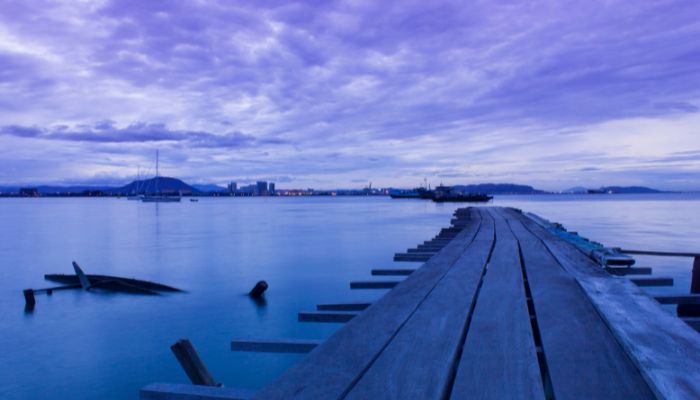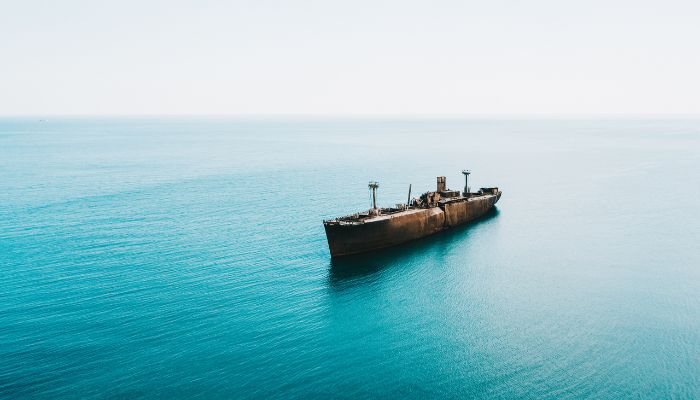10 Things About Malacca Strait You Might Not Know
The Strait of Malacca is a narrow water channel, yet it is one of the most strategic shipping lanes in the world. It lies in South East Asia, amidst the eastern coast of Sumatra and the western shore of the Malay Peninsula.
Malacca Strait is part of the Sunda Shelf, an expansive and low-lying land at the advent of the Quaternary period, around 2.6 million years ago. It has remained largely unchanged for the last 7 years or so.
Movement of the crust was minimal, and the Strait got its present-day form after sea levels rose due to the melting of ice on lands in areas of high latitudes.
Let us know more about the Malacca Strait in this article.
1. Funnel-Shaped channel stretching to 800 kilometres
It is connected to the Singapore Strait at the southeastern end. The funnel-shaped Malacca Strait is around 800 kilometres or 550 miles long and 40-155 miles or 65-250 kilometres wide.

Malacca Strait links the Andaman Sea of the Indian Ocean and the South China Sea, part of the Pacific Ocean. The Strait is less than 3 kilometres wide at its narrowest point, called the Phillips point.
2. Named after the Malacca Sultanate
Malacca Strait was crucial for trade and travel in medieval times as well. Per historical texts, the port was named after the Malacca Sultanate, which controlled the region and the Strait from the 14th century to the early 15th century.
Other sources suggest that the Malacca Strait was named after the most prosperous trading port of the region. Known as Melaka or Malacca, it grew from the 14th century under the Malay kingdoms that came into power.
In the 16th-17th centuries, colonial powers fought to get it under their control.
The dynasty was founded by Iskandar Shah. At the height of its glory, the capital grew into one of the period’s largest and busiest transhipment ports.
Malacca covered a major part of the Malay Peninsula, the Riau islands and a large chunk of Sumatra’s northern coast. The economy was based on maritime trade, with the coast being settled by merchants and traders offering trade-related services.
Malacca also rose as a learning centre, especially the hub of cultural and artistic dissemination. With its progress came the golden age of the Malacca Sultanate. This age also witnessed the development of the Malay identity.
3. Malacca Strait has some coral reefs and sand ridges
The channel is generally shallow; however, it is up to 120 ft or 37 m deep in the southern part. Going to the northwest, the seabed slowly deepens until it reaches about 650 ft or 200 metres, when it finally merges with the Andaman Basin.

Many islets, fringed reefs and sand ridges are found in the Malacca Strait. They are usually found in its southern part. The sand ridges are formed by the accumulated sediment and gravel deposited by rivers flowing from Sumatra.
Coral reefs are found in the Strait but are not well-developed due to high turbidity and sedimentation. Per a study, there is a lower coral population in the Malacca Strait compared to the coral reefs in the South China Sea.
4. Malacca Strait experiences a hot and humid climate
Malacca Strait has a hot and humid climate. It is fed by the northeast monsoon during winter, while summers are characterised by the southwest monsoon. Rainfall is abundant and average rainfall throughout the year varies from 1930 mm and 2575 mm.
All through the year, the current flows northwest through the Malacca Strait. The temperature on surface water is usually between 30 to 31 degrees Celius on the eastern side, while it is quite low, about 2 degrees celsius in the western part of the Strait.
The Strait has very low levels of salinity since it is quite close to land, and many rivers flow into it, carrying nutrients and freshwater.
5. Piracy Incidents have reduced in the Malacca Strait since 2016
In 2022, the International Chamber of Commerce brought out a report on piracy and armed robbery against ships. Per the report, 37 such incidents were reported in the first 3 months of the year, and most of such accidents occurred in Southeast Asian waters.
Although most media coverage focuses on Somalian pirates, Southeast Asia is one of the most dangerous and unsafe in terms of maritime crime. Most vulnerable are the Singapore Strait, Malacca Strait and the waters of Indonesia.

There are many factors for increased piracy accidents in this part of the world. These range from wide income gaps, poverty, the existence of narrow shipping lanes which makes ships travelling through them an easy target etc.
Piracy incidents in Asia have reduced though not completely mitigated, despite measures. This is because of the limitations of laws and their improper implementation.
However, the good news is that attacks on ships have not been recorded in the Malacca Strait from 2016 onwards. In 2016, only two such cases were reported in the Strait.
Otherwise, in 2000, the Malacca Strait recorded more than 70 cases of piracy and armed robbery, which made it a dreaded maritime route at that time.
Now, tugs are mostly targeted in the Malacca Strait. This is because most of these vessels don’t possess an Automatic Identification System and can be attacked easily due to their low freeboards.
6. Two Ramsar Sites lie along the Strait of Malacca
Swamps and mangroves are found along the Malacca Strait coasts. A massive low-lying swamp is situated along Sumatra’s eastern coast. Hence, the strait experiences silting on both sides and near the mouths of rivers.
The mangroves are found along the shores of Thailand, Singapore, Malaysia and north Sumatra. They form diverse ecosystems and wetlands which need to be preserved. Two Ramsar sites, Pulau Kukup and Tanjung Piai are found along the Strait of Malacca.
Tanjung Piai is an important Ramsar site of Malaysia. It has the famous Johor National Park. The mangroves hold significant fish reserves and are also a popular tourist attraction.
The mangroves are home to many migratory birds. Apart from this, they act as a barrier to protect the inner settlements and agricultural fields from cyclones and tsunamis.
7. Malacca Strait is one of the busiest straits in the world
Malacca Strait is an important marine waterway and is the main shipping route between the Indian and Pacific Oceans. It connects the major Asian economies of India, Malaysia, Indonesia, Singapore, Philippines, China, Taiwan, Vietnam and South Korea.

It is a part of the Maritime Silk Road that goes from the coast of China to the southern coast of India. From here, it is linked to Mombasea and then goes to the Red Sea through the Suez Canal. From the Mediterranean to the Adriatic region leading all the way to Trieste, which is connected by railways to Central Europe and the North Sea region.
More than 94,000 ships pass through the Strait annually, making it one of the busiest straits in the world. These vessels carry 25-35% of the trade items and essentials, including oil, manufactured products, coal, coffee etc.
8. It has tremendous strategic importance.
The Strait of Malacca is also a maritime chokepoint. It lies at a strategic location. Approximately a quarter of oil is shipped via sea, more than 15 million barrels per 24 hours.
Many North East Asian countries like China or Japan depend heavily on this oil which comes to them through this Strait. If the Strait were blocked, it would be difficult for China to obtain its energy supplies and raw materials from African nations where the former has invested billions in mining and undertaking construction projects.
Additionally, it is also quite congested as its width is the least at Philip Channel.
9. Fraught with dangers and many shipwrecks
The Malacca Strait has around 34 shipwrecks going back to the 1880s. They are dangerous, and ships can collide with some of these since the waters are quite shallow and the Strait is also narrow at some points.
Deadly collisions have also been reported in the Strait. On 20th August 2017, A US Navy destroyer called USS John S McCain collided with a merchant vessel Alnic MC in the eastern part of the Strait.

This led to the death of 10 crew members of the US Navy destroyer.
Another threat is loss of visibility or haze due to smoke from bushfires, as wildfires in Sumatra are common in some months of the year. The smoke from these fires reduces visibility by 660 ft. Hence ships are advised to go slow in such situations.
10. It Has approximately 43 ports and terminals.
There are many ports and harbours in the Malacca Strait. The legendary and historic port of Malacca, or Melaka, has undergone many renovations.
Today, it is easily accessible and well-maintained. It is situated on the southwestern coast of Malaysia and faces the Malacca Strait.
The main jetty for handling cargo lies at Tanjung Bruas. It was privatised in 1992. North of this is a CBM which handles oil and fuel. Other commodities handled at the port include animal feed, maise, wheat and rice bran, soya bean pulp, tapioca etc. More than 140 ships and 500,000 tonnes of cargo pass through the facility annually.
You might also like to read-
- 10 Things About Banda Sea You Must Know
- 10 Gulf Of Carpentaria Facts You Must Know
- 10 Southern Ocean Facts You Might Not Know
- 12 Siberian Sea Facts You Must Know
Disclaimer: The authors’ views expressed in this article do not necessarily reflect the views of Marine Insight. Data and charts, if used, in the article have been sourced from available information and have not been authenticated by any statutory authority. The author and Marine Insight do not claim it to be accurate nor accept any responsibility for the same. The views constitute only the opinions and do not constitute any guidelines or recommendations on any course of action to be followed by the reader.
The article or images cannot be reproduced, copied, shared, or used in any form without the permission of the author and Marine Insight.
Do you have info to share with us ? Suggest a correction

About Author
Zahra is an alumna of Miranda House, University of Delhi. She is an avid writer, possessing immaculate research and editing skills. Author of several academic papers, she has also worked as a freelance writer, producing many technical, creative and marketing pieces. A true aesthete at heart, she loves books a little more than anything else.
Subscribe To Our Newsletters
By subscribing, you agree to our Privacy Policy and may receive occasional deal communications; you can unsubscribe anytime.



